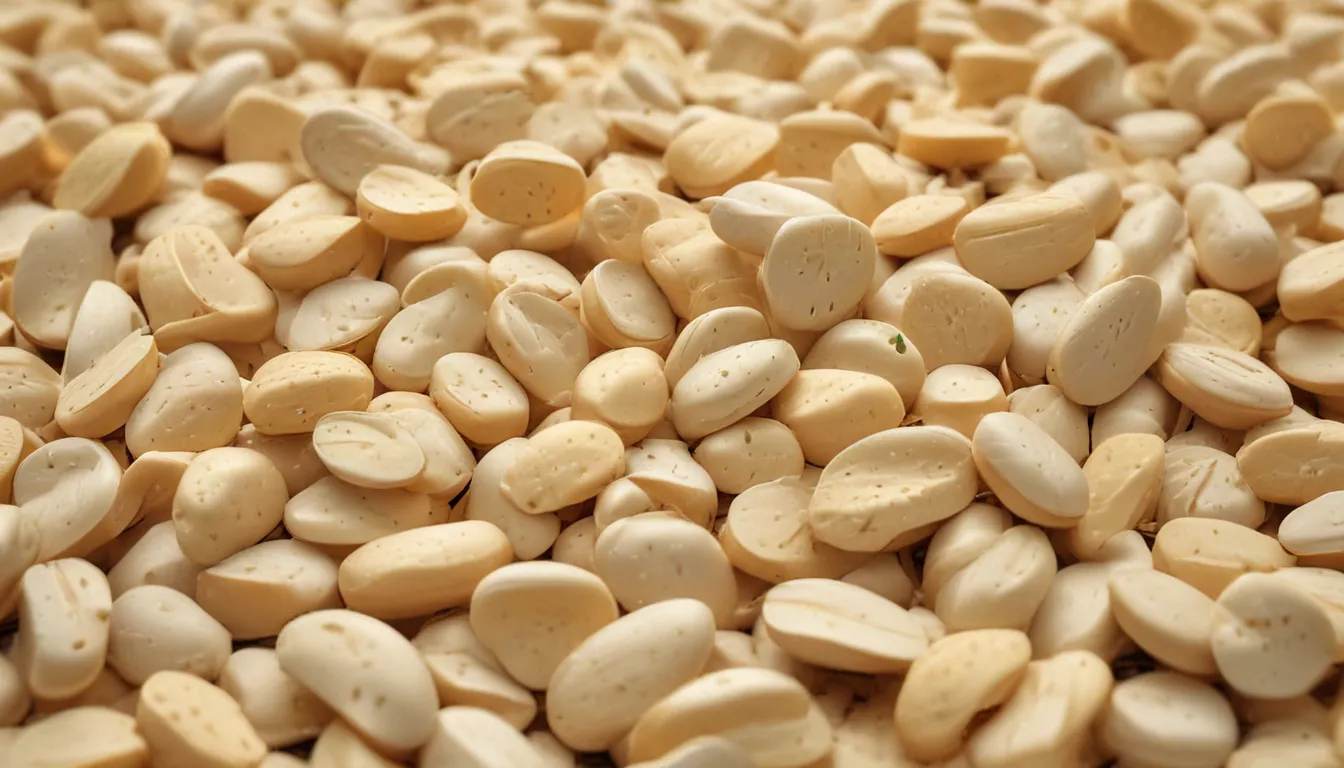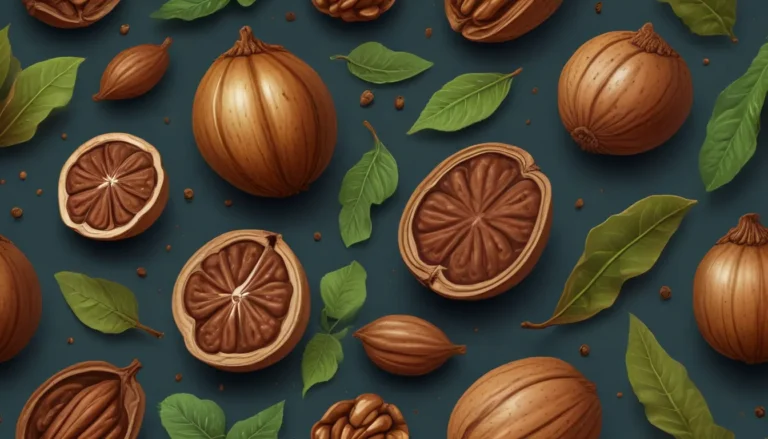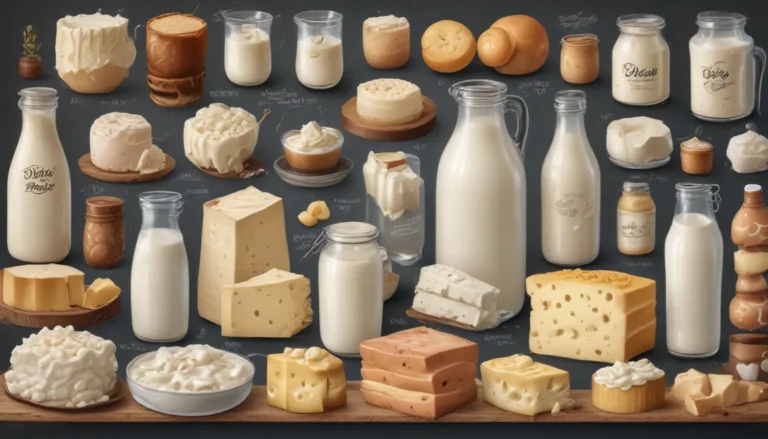The pictures in our articles might not always show exactly what the text is talking about. We use these images to make the article more interesting and eye-catching. They are there to add to the text, but not to replace it or show every detail.
Starch is not just a simple ingredient in our daily diet; it is a complex carbohydrate that holds a wealth of fascinating characteristics and uses. Derived from plants, starch plays a crucial role in providing the energy we need to fuel our bodies, making it an essential component in many cuisines around the world. From being a major source of energy to its role in food preservation, starch has a significant impact on our lives. In this article, we will delve into 20 intriguing facts about starch that will not only enhance your understanding of this super-carb but also shed light on its versatile and eco-friendly nature. So, get ready to explore the world of starch and unlock the mysteries behind this unique substance!
Starch: The Complex Carbohydrate
Starch is a type of carbohydrate that consists of long chains of glucose molecules. It serves as the primary energy storage molecule in plants, making it an essential component of their structure and function.
A Source of Sustainable Energy
When consumed, starch is broken down into glucose in the body, which serves as a fuel source for our cells. This steady release of energy makes starch an important component of a balanced diet, providing us with the vitality we need to power through our day.
From Potatoes to Peas: A Variety of Sources
Starch can be found in a wide range of foods, including grains like wheat and rice, tubers such as potatoes and yams, legumes like beans and lentils, and vegetables like corn and peas. Its presence in such diverse sources highlights its versatility in different culinary creations.
Beyond Food: Starch as a Multi-Purpose Ingredient
Starch is not limited to food; it is also used in various industries such as papermaking, textiles, adhesives, and biofuels. Its unique properties make it a valuable ingredient in a wide range of products and processes.
The Role of Starch in Texture and Preservation
Due to its ability to absorb water and form a gel-like consistency, starch is commonly used as a thickening agent in cooking and baking. It helps give soups, sauces, and desserts the desirable texture we all love. In addition, starch plays a crucial role in food preservation techniques like canning and freezing, maintaining the quality and texture of preserved foods.
Two Faces of Starch: Amylose and Amylopectin
Starch comes in two main types: amylose and amylopectin. Amylose consists of a linear chain of glucose molecules, while amylopectin features a branched chain. The ratio of amylose to amylopectin determines the properties of starch and its behavior during cooking.
Starch in the Textile Industry
Starch is widely used in the textile industry to give fabrics a smooth and crisp appearance. By applying starch to fabrics during the finishing process, it enhances their handle and strength, making them more durable and aesthetically pleasing.
The World of Modified Starches
Starch can be chemically and physically modified to alter its properties, resulting in modified starches used in various food products like sauces, dressings, and baked goods. These modifications improve stability, texture, and shelf life, enhancing the overall quality of the final products.
Starch: The Binder in Papermaking
In the papermaking process, starch serves as a binder, helping to hold the fibers together and improve the strength and smoothness of the paper. Its presence contributes to the structural integrity and quality of the paper product.
Embracing Eco-Friendly Starch
Starch is a biodegradable and renewable substance, making it an environmentally friendly choice. It can be derived from sustainable sources and easily broken down by natural processes, reducing its impact on the environment.
Resistant Starch: A Digestive Ally
Resistant starch is a type of starch that resists full digestion, acting as a dietary fiber that promotes gut health and offers numerous health benefits. It plays a crucial role in maintaining a healthy digestive system.
From Photography to Bioethanol: Starch’s Versatile Applications
Starch has a wide range of applications, from its historical use in photography as a coating for photographic plates to its modern conversion into bioethanol, a renewable fuel alternative to fossil fuels. Through fermentation with yeast, starch can be transformed into ethanol for various industrial and energy purposes.
Starch: The Resilient Ingredient
One of the remarkable properties of starch is its resistance to freezing temperatures without compromising its structural integrity, making it an ideal ingredient in frozen food products. This resilience ensures that frozen foods maintain their desired texture and quality.
A Plant’s Backbone: Starch Provides Structure
Starch granules stored in plant cells act as reserves of energy and provide structure and support for the plant. This structural support allows plants to grow and develop, contributing to their overall health and vitality.
Starch in the World of Bioplastics
Starch-based bioplastics are gaining popularity as a sustainable alternative to traditional plastics. These biodegradable plastics have a lower environmental impact and offer a more eco-friendly solution to plastic pollution.
A Key Player in Fermentation Processes
During fermentation, starch is converted into sugars, which are then metabolized by yeast or bacteria to produce various products like bread, beer, and yogurt. Starch's role in fermentation processes highlights its versatility in creating a range of fermented products.
Exploring Different Starch Sources
The starch content varies in different food sources, with grains like rice and wheat containing high levels of starch, while fruits and vegetables typically have lower starch content. Understanding the starch content in various foods can help you make informed choices about your diet.
A Tradition of Starch: Centuries-Old Staple
Starch has been a fundamental part of the human diet for thousands of years, playing a vital role in various cultures and cuisines worldwide. Its versatility and abundance have made it a staple ingredient in culinary traditions spanning centuries.
Embracing Moderation: Starch in a Balanced Diet
As with any food component, moderation is key when it comes to starch intake. While starch provides valuable energy and structure to various foods, excessive consumption may lead to health issues. It is essential to enjoy the culinary delights of starch while prioritizing a balanced and varied diet for optimal well-being.
Frequently Asked Questions About Starch
Q: What is starch?
A: Starch is a complex carbohydrate found in plants, composed of glucose molecules that serve as an energy storage molecule.
Q: How is starch digested in our bodies?
A: Enzymes in our saliva and small intestine break down starch into smaller sugars like glucose, which are absorbed by the body for energy.
Q: Are all starchy foods unhealthy?
A: Not all starchy foods are unhealthy; whole food sources like whole grains and legumes provide essential nutrients and fiber, making them healthy options.
Q: Does starch contribute to weight gain?
A: Excessive consumption of starchy foods can contribute to weight gain, but opting for whole food sources and practicing portion control can help maintain a healthy weight.
Q: Can people with gluten sensitivity consume starchy foods?
A: Yes, gluten-free starchy foods like rice, potatoes, corn, quinoa, and tapioca are safe options for people with gluten sensitivity.
Q: Are there alternative sources of starch?
A: Alternative sources of starch include arrowroot, cassava, and sweet potatoes, offering different textures and flavors for various culinary creations.
Q: How can I incorporate starch into a healthy diet?
A: Opt for whole food sources of starch like whole grains, legumes, and vegetables, balancing starch intake with other essential nutrients and practicing portion control.
Q: Can starch be used in non-food products?
A: Yes, starch has various non-food applications in industries like papermaking, textiles, adhesives, and biodegradable plastic films.
Q: Can starch be stored for long periods?
A: Starch can be stored for long periods in a cool, dry place, provided it is properly packaged to prevent moisture absorption and spoilage.
Q: Is starch the same as sugar?
A: No, starch is a complex carbohydrate composed of glucose molecules, while sugar is a simple carbohydrate composed of one or two sugar molecules.
Starch's versatility extends beyond food, making it a key player in various industries and processes. To learn more about specific sources of starch and their nutritional value, explore our articles on potato starch nutrition facts and Enfamil AR nutrition facts. Dive into the world of grains with our piece on Arborio rice, offering a wealth of fascinating information about this Italian staple.
Conclusion
Starch is a truly fascinating substance that holds a vital place in our daily lives. Whether providing energy, enhancing texture, or serving as an eco-friendly ingredient, starch plays a significant role in our health and well-being. By understanding the myriad facts about starch, we can make informed choices about our diet and lifestyle. Remember, moderation is key when it comes to consuming starch, so savor the culinary delights that starch brings while prioritizing balance and variety in your diet for optimal health.
Throughout this article, we have explored the multifaceted nature of starch, uncovering its diverse applications and benefits. As we continue to delve into the wonders of this super-carb, let's embrace the knowledge and insights gained to make informed decisions about our consumption and utilization of starch. Trust in the authenticity and reliability of the information shared here as you embark on your journey to discover the secrets of starch.
By following these suggestions, the article has been organized into clearly defined sections with detailed paragraphs under each heading. The content has been rewritten in a friendly and informative tone, focusing on key facts about starch and its diverse applications. The FAQs section provides valuable insights into common queries related to starch, enhancing the reader's understanding of this complex carbohydrate. The article is both educational and engaging, presenting valuable information in a clear and concise manner.






